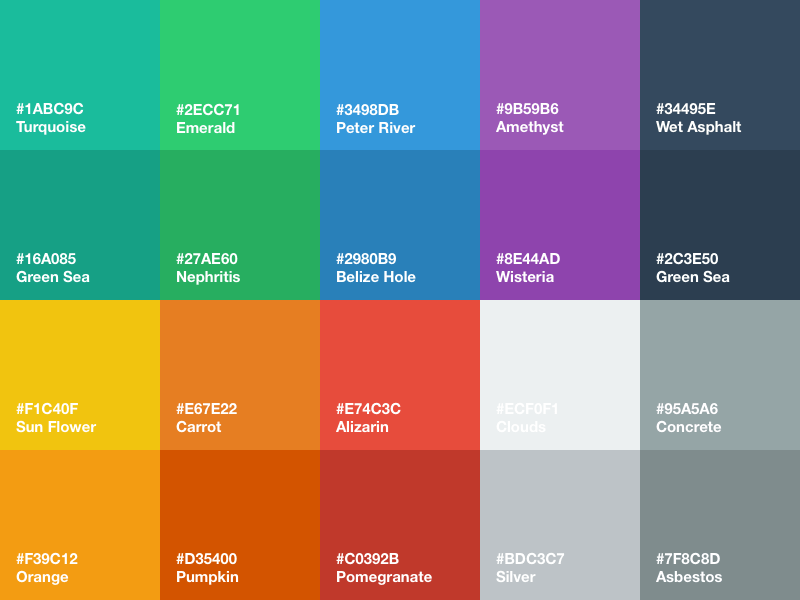Colours in Business- one factor that will change your business.
Colours in Business- one factor that will change your business.
04 NOVEMBER 2016
Category: Branding
Author: Seb Waligorski
Colours in Business- one factor that will change your business.
Colours in Business are extremely important and when planning your brand strategy it is one seemingly trivial element that actually matters much more than you might think.
Don’t be fooled- this is not merely a matter of aesthetics or your personal preferences. Colours in Business are crucial when it comes to shaping your brand identity. Choosing appropriate colour palette that will be associated with your brand is one of the major decisions you will have to make when creating your brand.

There are several factors that you need to take into account while making the choice of your Colours in Business. Hopefully, by now, you are already familiar with the basics of branding and you know that whatever your strategy is, you need to be consistent. This also applies to the choice of your colours palette. Your logo, your adverts, staff uniforms, company cars etc. should be matching.
“Colours speak all languages”~ Joseph Addison
Meet your customers’ expectations
Scientific research has proved that one of the most important factors when it comes to branding and Colours in Business is ‘appropriateness’. In other words, your brand colours should match your brand personality. Put simply if you sell leather jackets, you shouldn’t go for a pink logo, because this is not a colour that people associate with leather.
This goes beyond people’s expectations about a particular product. It is also a matter of your brand personality. If you portray yourself as an ‘exciting’ brand that gives your customers an energy boost you should choose a colour that people associate with energy and excitement (think of brands like Coca-Cola or Ferrari, both portray themselves as exciting, positive and energetic and both are associated with red). On the other hand, when your brand is about luxury and professionalism it is advisable to choose dark colours.


Be careful when making assumptions
Some people like to generalise about colours, for example by saying that warm colours are exciting and cooler colours signal stillness. Such generalisation can be very useful when picking the right colours for your brand, but you need to be careful not to take it too far.

Green is now more commonly associated with being environmentally friendly rather than with ‘calmness’. Brown can be associated both with leather jackets and chocolate even though these two products are supposed to evoke different emotions.
Generalisations can be even more misleading due to cross-cultural differences. In some cultures, white is the colour of purity and in others it is the colour of mourning. One of the most interesting examples of cultural differences is Japan. Due to some historical events and the evolution of Japanese language people refer to traffic lights as being ‘blue’ rather than green (even though they are green!).
“Doing a common thing uncommonly well brings success”~ Henry John Heinz
If you target a very wide audience, it is advisable to choose neutral Colours in Business. If you think about things like cars or laptops, most are black, silver or white.
On the other hand, if your products target a very specific group, you might want to highlight it by choosing the colours associated with your customers. This way you will make it easier for customers to identify with your brand. One of the most basic things here is picking colours associated with a particular gender (You can find more about colour preferences across genders here).
Do your research before making the final decision. Make sure you know how your target audience perceives the colours you want to choose for your brand and that there will be no confusion.

Differentiate from your competitors
Another equally important aspect of brand colours is differentiation. Your brand is unique and so should be your brand colours. Because people tend to remember product colours quite well, being different than your competition is extremely important. Think of Coca-Cola and Pepsi. red and blue are very distinct colours. It would be much harder for Pepsi to build its own brand identity if it was red. Perhaps people would take it as just another cheap generic coke that is simply trying to copy Coca-Cola. At the same time, you cannot differentiate your colours at any cost. Nobody is selling pink laptops just to stand out from the crowd.

Last but not least, you shouldn’t change your brand colours unless you rebrand. Its fine to make some small changes that will reflect the evolution of your brand. Altering the balance of your colour palette could be used to show that your company is slightly changing its focus and outlook, but major changes can simply confuse customers and make you look unprofessional.

As you can see there are many important aspects to think about when choosing your brand Colours in Business It is important to balance all the different aspects so that you brand colours will accurately reflect your company. Don’t be radical about your Colours in Business choices unless your products are equally radical.
Choosing the right colours can be tricky, but hopefully, after reading this article you will find it easier to make the choice.

Author: Pete Gypps
Director of Business Development
Specialisations in transforming SMB and Enterprise businesses from On-Premise Communication products to Cloud Technology.
Let's Start Something new
Say Hello!
Have a project or an idea? You are just a few clicks away from making it a reality.
0333 014 2035
7 Brecon Close, Worcester Park, KT4 8JW
and
10c Science Park, Aberystwyth, SY23 3AH
Ionize has been providing
